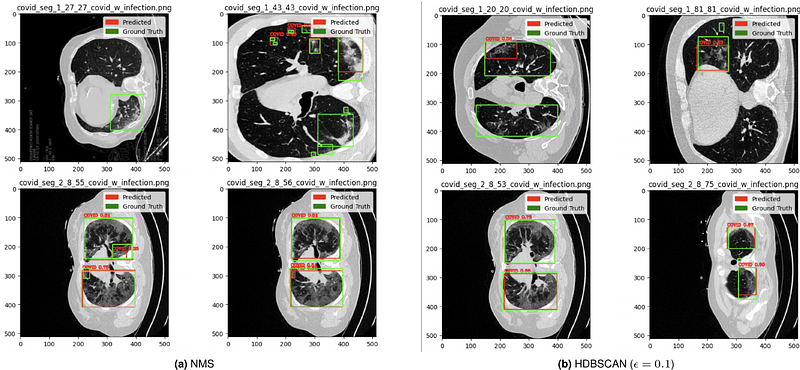Bayesian automatic screening of pneumoniaand lung lesions localization from CT scans. Acombined method toward a more user-centredand explainable approach

Bayesian automatic screening of pneumoniaand lung lesions localization from CT scans. Acombined method toward a more user-centredand explainable approach
Moure Prado, A.; Guerrero-Lopez, A.; Arias-Londono, J. D.; Godino-Llorente, J. I.
AbstractWhile semantic segmentation allows precise localization of potential lesions, a segmentation based on object detection using bounding boxes is considered more effective for indicating the location of the target without replacing clinical expertise, reducing potential attentional and automation biases. In this context, this work lays a foundation for better and more explainable localization of lesions in the lungs due to pneumonia by applying a combined approach first using a Bayesian uncertainty measure to evaluate the likelihood of a specific slice being positive in a particular disease and, second, directing the localization of the lesions toward those positive images following object detection methods. This approach provides confidence measures for the model\'s predictions and the regions of interest (i.e., bounding boxes) pointing to the lesions, improves the overall model\'s explainability, and leaves the expert at the centre of the decision. However, despite its advantages, identifying the existing lesions using bounding boxes also comes with challenges, especially in effectively managing overlapping boxes and developing a fusion strategy to combine smaller boxes into larger ones. In this respect, this paper also proposes a methodology to deal with such a problem. The methods proposed are tested with a large corpus of approximately 90,000 CT images extracted from public datasets of COVID-19, bacterial, fungal and other viral types of pneumonia, as well as control individuals, paying special attention to the first of these diseases due to the increasing interest raised by the recent pandemic. For this aim, this work uses a Bayesian neural network based on DenseNet121 for the screening module; and Cascade R-CNN, RetinaNet, and YOLO architectures for identifying the lesions. The method shows screening accuracies for COVID-19 up to 94.61%, which are complemented with robust uncertainty measures. The localization of the associated lesions is carried out with an mAP50 of 0.5559. The results and the methodology can easily be extrapolated to other pneumonias.